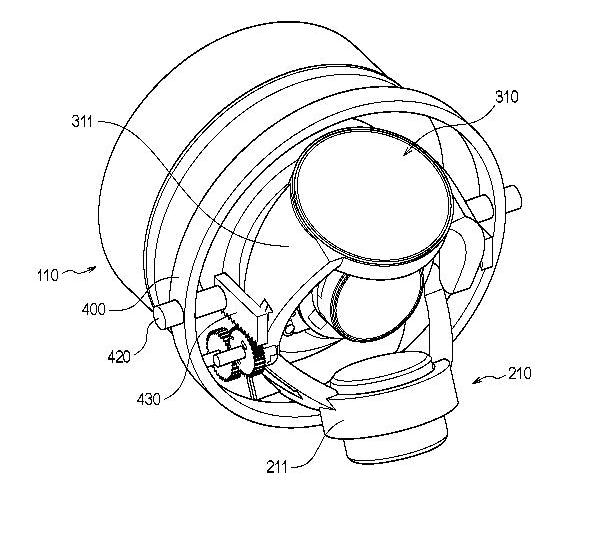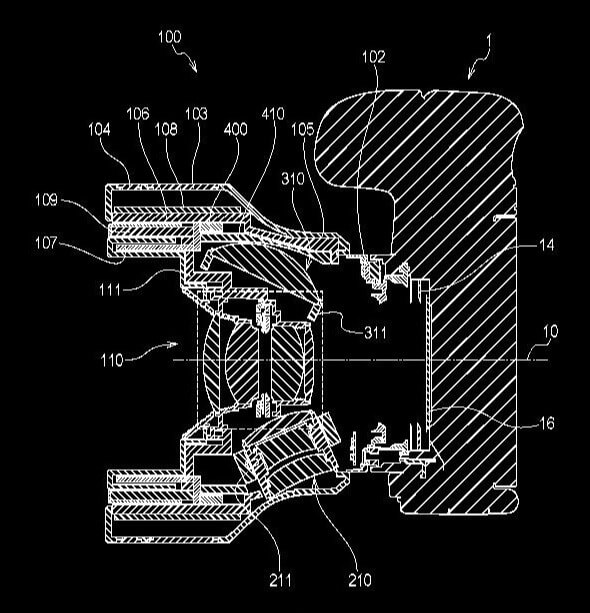In this Japan Patent Application, JP 2023-118490, Canon is investigating creating smaller built in teleconverters for use in lenses that we would normally not expect to see a teleconverter installed in.
The idea of this patent application is to make the mechanism and the sliding out of the optical elements that make up the teleconverter as small as possible, and that can fit inside of the lens body without requiring the “hump” we now see on the built-in teleconverter lenses.
Here is the mechanism animated.

It's kind of cool, I'm not sure how practical this would be in terms of reliability over time and survivability if you ever dropped the lens, but there could be some great use cases if Canon gets this working right.
I found it curious and also a little interesting that Canon would show the cross-section of what appears to be a 50mm with this mechanism, suggesting a possible 50mm and 85mm hybrid lens using a built-in teleconverter, so consider as an example a 50mm F1.2 and an 85mm F2.0 built into the same lens and able to switch between the two primes with just a touch of a button. Interestingly our smartphones allow us to switch between two (or more focal lengths) with just a touch of a button or slider, so this way we could conceivably have a similar capability with our larger cameras.
This is also the continuation of a prior patent application (2023-066205), which at least shows that Canon is somewhat serious in the early stages of development.
Now of course, as with all of Canon's Patent applications, it's simply a patent application. Not a patent yet and certainly not a product yet (or ever). It does give us a glimpse into what the smart minds at Canon are dreaming up though.
Source: Japan Patent Application JP 2023-118490 via: Asobinet


It does have the potential to open up a few useful pairs of lenses, although I can't help but think that the wider the lens, the more demanding the optical formular for a teleconverter.
35mm | 50mm (1.4x)
24mm | 50mm (2.0x -ish!)
35mm | 70mm (2.0x)
Obviously, they used a wide angle lens to demonstrate how small it can be but this would be great for telephoto lenses.
If the size is as small as mentioned, I hope that Canon can keep the IQ at the level of "normal" TCs.
The lens looks quite bulky. If such a design were the practical implementation, I don't know if it would feel good in the hand.
It is smaller than the ones Canon and Nikon currently use.
I can’t read the patent so I don’t know how much more info there is in there. In the images, there appears to be at least 3 positions; the 2 extra groups completely out of the way, the 2 groups in position close to the stationary group and the 2 groups in position and farther back from the stationary group. Is this meant to represent the process of going from 1x to 1.4x or have the come up with a way to have a 1x and then engage a “zoom” from 1.4-2x? The 2x has always had additional lenses/groups compared to the 1.4x so just using distance between the groups would be a new approach for a teleconverter. Very cool if so, theoretical 300 f2.8 would flip to a 420-600 f4-5.6.
I am not sure that it is any smaller expanded.
External expansion would irk some people but it will still be more convenient than adding an external TC.
That is the entire point of the patent.
Most of the illustrations are of a lens with a built-in teleconverter.
We are not just seeing the size of the teleconverter.
We are seeing the enter size of a lens with a built-in switchable teleconverter.
It is built into a wide-angle lens.
That is not very helpful in determining the size since it would be in a super telephoto lens in reality.
It is a patent, not an advertisement so it is not designed to be helpful.
I find myself putting on and taking off TCs with more frequency than I'd like, and almost always in muddy conditions.